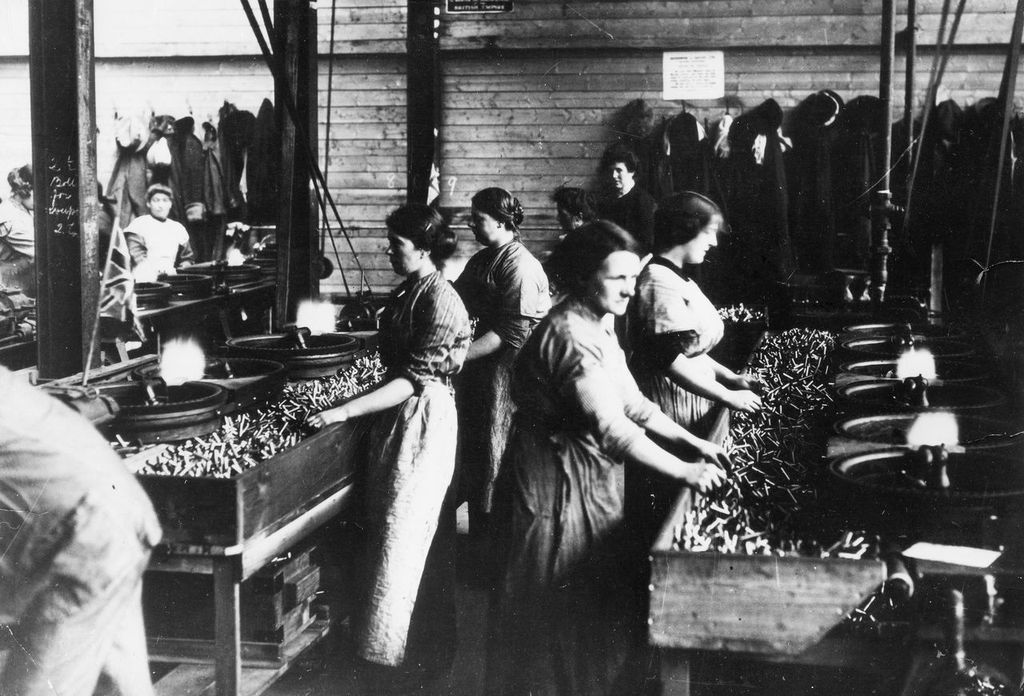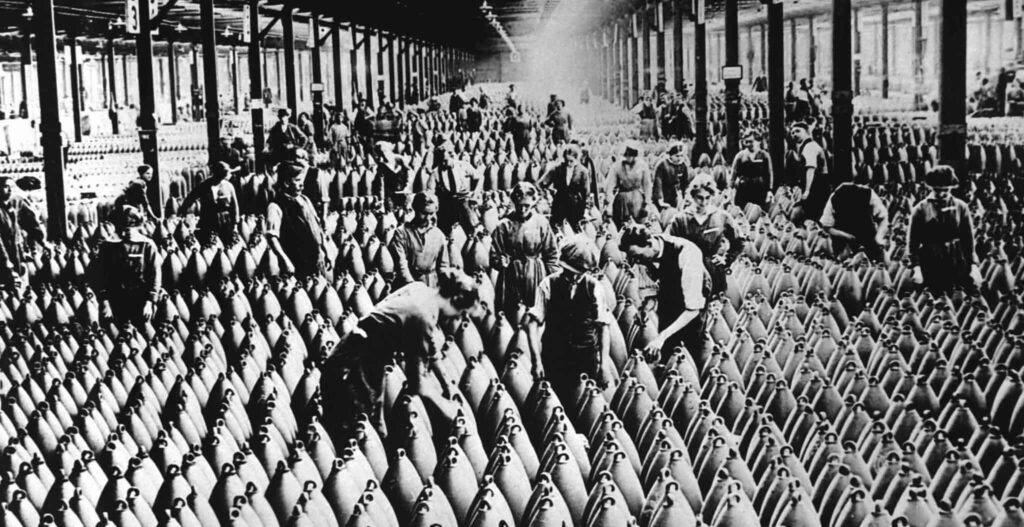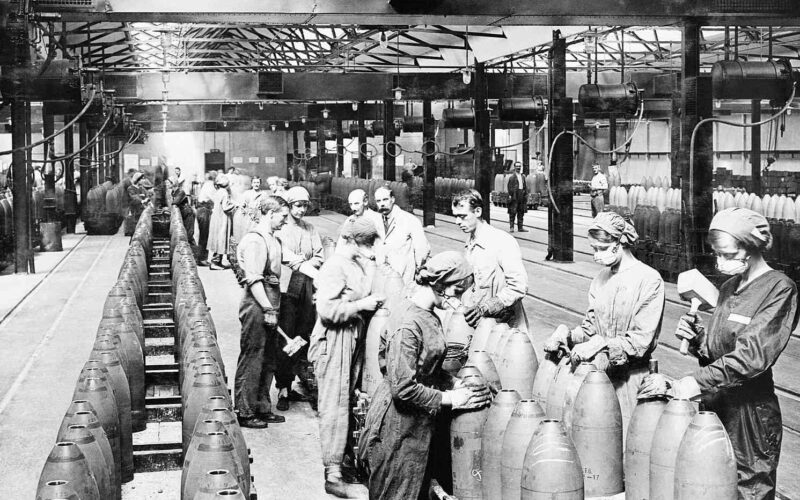World War 1, also known as the Great War, was a global conflict that lasted from 1914 to 1918. It involved many of the world’s great powers divided into two opposing alliances: the Allies and the Central Powers. The conflict was sparked by the assassination of Archduke Franz Ferdinand of Austria-Hungary, and eventually led to the involvement of many countries in the war.
The war was characterized by trench warfare, where soldiers lived in long, narrow ditches for extended periods. The trenches provided some protection from enemy fire but were also cramped, unsanitary, and dangerous due to constant enemy attacks and disease. New technologies such as poison gas, tanks, and airplanes were used for the first time, leading to unprecedented levels of destruction. The mobilization of entire societies resulted in millions of men being conscripted into the armed forces and women taking on new roles in the workplace. This had a profound impact on the economies and social structures of many countries, leading to significant political, economic, and social changes.
The war resulted in over 16 million casualties, including soldiers and civilians, and brought about the collapse of several empires. The League of Nations was established after the war in an effort to prevent another global conflict, but its efforts were ultimately unsuccessful.
World War 1
World War 1, also known as the Great War, was a global conflict that lasted from 1914 to 1918. It involved many of the world’s great powers divided into two opposing alliances: the Allies (which included France, Russia, and the United Kingdom) and the Central Powers (which included Germany, Austria-Hungary, and the Ottoman Empire).
The spark that ignited the conflict was the assassination of Archduke Franz Ferdinand of Austria-Hungary in 1914. This event eventually led to the involvement of many countries in the war as complex diplomatic and military alliances were activated.
The war was characterized by trench warfare, which was a type of fighting where soldiers lived in long, narrow ditches for extended periods of time. Trench warfare was marked by a stalemate on the Western Front, where both sides were unable to make significant gains for years. The trenches provided some protection from enemy fire, but they were also cramped, unsanitary, and dangerous due to the constant threat of enemy attacks and disease.
Additionally, new technologies such as poison gas, tanks, and airplanes were used for the first time in the war, leading to unprecedented levels of destruction. The mobilization of entire societies resulted in millions of men being conscripted into the armed forces and women taking on new roles in the workplace to support the war effort. This had a profound impact on the economies and social structures of many countries, leading to significant political, economic, and social changes.
The war resulted in over 16 million casualties, including soldiers and civilians, and brought about the collapse of several empires, including the German, Austro-Hungarian, and Ottoman Empires. In its aftermath, the Treaty of Versailles was signed in 1919, officially ending the war and imposing severe penalties on Germany. The League of Nations was also established in an effort to prevent another world war, but its efforts were ultimately unsuccessful, and the world would be plunged into another global conflict just over two decades later.
Overall, World War 1 had far-reaching and lasting effects on the world, shaping the political, economic, and social landscape of many countries for decades to come. It remains a significant event in world history and is often studied as a cautionary tale about the devastating consequences of war and the importance of international cooperation.

Role of Women in World War 1
The role of women in World War 1 was significant, as they played an important part in supporting the war effort on the home front. With millions of men conscripted into the armed forces, women stepped into new roles in the workplace to help keep the economies of their respective countries running. They took on jobs in factories, offices, and farms, contributing to the production of essential goods and services.
Women also played a key role in supporting the morale of soldiers and their families. Many joined organizations such as the Red Cross, where they provided care for the wounded and worked to support the families of soldiers on the front line. They also organized fundraising events and sent care packages to soldiers, helping to boost their spirits and show them that they were not forgotten.
In addition to their work on the home front, some women also served as nurses, working in field hospitals and on the front lines to care for wounded soldiers. They faced numerous challenges, including exposure to disease, harsh living conditions, and the constant threat of attack. Despite these risks, many women answered the call to serve their countries and made significant contributions to the war effort.
The role of women in World War 1 was instrumental in supporting the war effort and helping to maintain morale. It also marked a turning point in their history, as they gained new opportunities and greater independence in the workplace. The contributions made by women during the war helped to lay the foundation for greater gender equality in the years that followed.
Some Famous Women
During World War 1, several women gained fame for their contributions to the war effort. Some of these women include:
- Edith Cavell – A British nurse who worked in occupied Belgium during the war. She helped to smuggle Allied soldiers out of the country, saving the lives of over 200 men. She was eventually captured by the Germans and executed, becoming a symbol of bravery and sacrifice.
- Clara Barton – An American nurse and humanitarian who founded the American Red Cross. She provided care for wounded soldiers on the battlefields of the Civil War and later served as a nurse during World War 1. She worked tirelessly to support the war effort and is remembered for her contributions to the field of nursing and her humanitarian work.
- Mary Edwards Walker – An American physician and suffragist who served as a surgeon during the Civil War and later as a contract surgeon during World War 1. She was the first woman to receive the Medal of Honor, which she received for her work as a field surgeon during the Civil War.
- Elsie Knocker and Mairi Chisholm – Two British women who served as ambulance drivers in Belgium during the war. They set up a first-aid post near the front lines and helped to care for wounded soldiers, becoming known as the “Angel of Belgium.”

These women, among many others, made significant contributions to the war effort during World War 1. Their bravery and dedication inspired others and helped to pave the way for greater gender equality in the years that followed.
Statistics
The role of women in World War 1 was significant, and they made important contributions to the war effort in a number of ways. Here are some statistics to illustrate the impact of women during the war:
- Women in the workforce: The war resulted in a shortage of male workers, and many women were called upon to fill the gap. By 1918, over 2 million women were working in jobs that were traditionally held by men, including munitions factories, hospitals, and administrative positions.
- Women in the military: While women were not allowed to serve as combat soldiers, they served in other capacities, including as nurses, clerks, and telephone operators. Over 12,000 British women served as auxiliary nurses during the war, while over 350,000 American women worked in non-combat roles.
- Women’s contributions to the war effort: Women also contributed to the war effort through volunteering and fundraising. Women’s organizations, including the Women’s Land Army, the Women’s Voluntary Service, and the Women’s Emergency Corps, helped to support the war effort in a variety of ways.
These statistics demonstrate the significant impact that women had during World War 1, and their contributions helped to shape the course of the war and the future of women’s rights.
Conclusion
In conclusion, World War 1 was a global conflict that lasted from 1914 to 1918 and had a profound impact on the world. The role of women in the war was significant and demonstrated their capability and determination to support the war effort. Despite not being allowed to serve as combat soldiers, women played crucial roles in the workforce, military, and volunteer organizations. Their contributions helped to fill the gap caused by the shortage of male workers, and they demonstrated their ability to take on new responsibilities and make a difference in their communities.
The impact of women’s contributions during World War 1 cannot be overstated. Women played a vital role in supporting the war effort and helped to shape the outcome of the war. The experience of women during the war helped to break down traditional gender roles and paved the way for greater social and economic equality in the years that followed.

In the aftermath of the war, women’s rights continued to evolve, and many of the gains made during the war were consolidated. Today, women are active participants in all aspects of society, including the military, and their contributions are recognized and valued. The legacy of the women who served and sacrificed during World War 1 continues to inspire future generations to strive for greater equality and progress.

